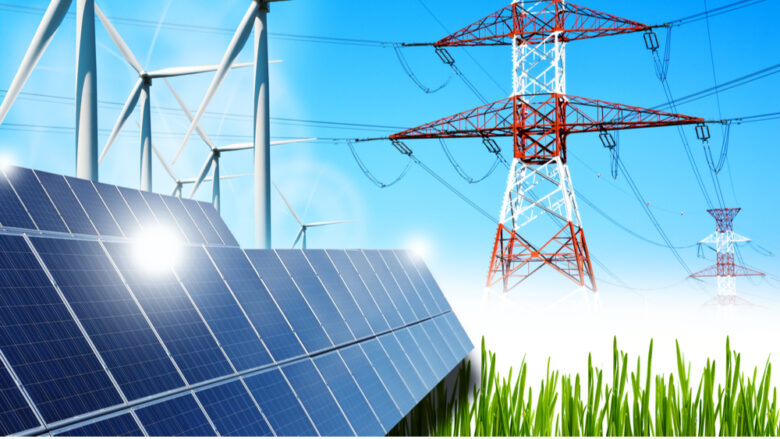Clean technology (green tech) refers to any category that reduces negative environmental impacts by recycling materials, preventing pollution and conserving natural resources. These revolutionary technologies range from solar panels and smart meters, to generative AI and other breakthroughs that support sustainable future.
1. Decentralized Microgrids
Energy, Utilities and Resources (EUR) organizations face increasingly short sustainability timelines; as a result they must find ways to enhance efficiency while decreasing emissions. With microgrids becoming an increasingly viable solution they are turning more frequently towards them as an answer. Microgrids are flexible, integrated solutions that turn consumers into energy producers. They serve as backup power during crises and enable consumers to monitor and manage their own energy usage through solar panels, home batteries and other distributed energy systems.
Academically, microgrids go beyond engineering and economic considerations to encompass societal transformation, geopolitical implications and evolving paradigms of sustainable development. Therefore, understanding their importance requires taking multiple viewpoints into account based on rigorous research as well as interdisciplinarity.
2. Artificial Intelligence
Clean tech companies strive to improve existing systems more sustainably by cutting costs, waste and emissions while improving efficiency and reliability – this broad approach to innovation encapsulates the concept of the smart grid.
Smart grid technologies enable the integration of renewable sources like solar and wind power and consumer-generated energy from home appliances into its network, creating a more balanced energy landscape. Sensors and data analytics assist with optimizing power flows, balancing supply and demand and reducing losses; plus they empower consumers by creating energy saving opportunities such as demand response programs or coordinating low priority home devices to avoid peak electricity use.
3. Start-Ups
Startups are young businesses with the potential to rapidly scale and become industry leaders, usually marked by innovative products or processes, an inclusive culture and an entrepreneurial outlook.
These startups are at the forefront of the smart grid revolution, developing innovative methods to combat climate change and prevent catastrophes that might otherwise be unavoidable. Furthermore, these startups aim to make green technology accessible by making it simpler for consumers to become prosumers of electricity while simultaneously integrating renewable energy sources into their homes.
4. Grid Enhancing Technologies
The smart grid revolution aims to radically optimize energy production, distribution and consumption. It relies on advanced sensors, two-way communication systems and automation technologies in order to provide safe, sustainable electricity at competitive costs. This self-healing grid reduces outages while improving reliability.
Rebuilding our electric infrastructure can be an enormous task, requiring extensive upgrades to transmission lines. But grid-enhancing technologies (GETs) such as dynamic transformer ratings, power flow controls and topology optimization enable utilities to increase capacity without incurring extra construction costs.
5. Smart Meters
Smart meters, unlike their analog counterparts which require manual readings by utility workers, automatically transmit consumption data to energy companies – eliminating estimation errors and providing more precise billing. Energy monitoring devices connect to in-home displays, providing customers with unprecedented insight into their energy consumption and consumption habits, helping to manage consumption and reduce carbon emissions while managing bills more effectively.
Some consumers remain uncertain about smart metering and may request moratoriums, delays or opt-out programs to protect their own interests. To address this, reputable energy companies must ensure all new technologies synchronise through common technical standards to provide smart services which are compatible between different suppliers.
6. Battery Makers
Cleantech solutions are helping make green energy more sustainable, from efficient electric vehicles and smart charging systems to the grids that power them. Furthermore, these advanced and sustainable infrastructure projects include smart street lighting systems, waste management services and improved building practices.
Although the US does not yet boast a significant EV battery manufacturer, efforts are underway to increase domestic production. Anovion Technologies in Georgia utilizes recycled lithium batteries in their production of energy-dense batteries enabling longer range EVs.
7. AI-Driven Predictive Analytics
Artificial Intelligence Predictive Analytics allows businesses to predict outcomes and devise strategies aimed at meeting expected results, helping avoid problems before they arise and streamline processes for increased efficiency and cost savings.
Smart meters allow utilities to track energy consumption in real time. With such accurate information available to them, consumers may be able to lower their electricity costs by switching rate plans that better suit their habits and homes. Clean tech solutions in agriculture can optimize water usage and maximize crop yields by monitoring soil moisture, wells, weather stations and equipment to decrease water waste and decrease driving time.
8. Energy Storage
Energy storage systems enable electricity to be stored and then released at an optimal time, such as electric vehicles and commercial buildings. Lithium-ion batteries are among the most commonly used energy storage solutions.
This technology helps create an adaptive grid capable of responding quickly to real-time needs and environmental goals, but requires an amendment to regulatory structures so as to incentivize innovation while upholding reliability. Furthermore, a workforce capable of designing smart energy systems with consumer engagement at their core must also be assembled. Support the adoption of electric vehicles, thus reducing emissions and fossil fuel dependency while using renewable sources for charging, to further enhance sustainability.
9. Smart Cities
Electricity production is one of the leading sources of greenhouse gas emissions. Smart grids, which use advanced digital technologies and sensors for two-way communication to optimize production, distribution and consumption. Energy storage solutions are an integral component of smart cities, helping reduce waste and dependence on nonrenewable sources such as fossil fuels. Companies developing such technology systems are garnering interest as potential investment opportunities in clean tech investments.
Governments are taking strides toward smart and sustainable living by adopting smart practices in urban living environments. From green buildings to intelligent traffic management systems, this revolution could change lives dramatically for the better.



